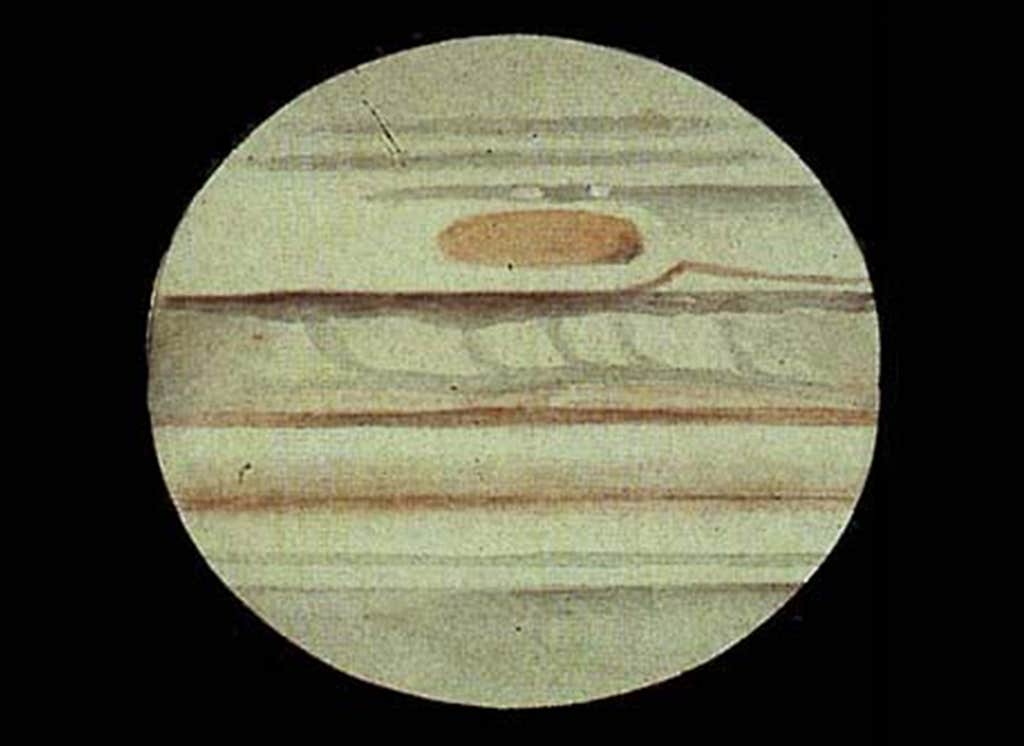Mysteries around Jupiter’s Great Red Spot have been swirling for centuries. No one is sure when the tremendous whirl—the largest and longest-lived storm in our current solar system, with a diameter wider than planet Earth and wind speeds of more than 260 miles per hour—began. Or why it’s red. Or even who first observed it (was it a 17th-century Italian or Briton—or a 19th-century German or American?).
One of its latest mysteries is why it’s been shrinking dramatically over recent decades. This question nagged a 19-year-old undergraduate meteorology major who had a side interest in space. Caleb Keaveney, who was, at the time in 2020, learning about how multiple storm systems interact in persistent high-pressure systems—to create dramatic outcomes such as heat domes and droughts—here on Earth, wondered: Could similar dynamics be a play on the strange and stormy surface of Jupiter?
In a new paper, published in the journal Icarus, Keaveney, now a Ph.D. student in planetary sciences at Yale University, and his coauthors propose that this familiar atmospheric pattern on Earth might explain the shrinking of the gas giant’s massive, persistent storm.
They fed data into computer models to play out what would happen if fewer, smaller storms were being consumed by the Great Red Spot. (Owing to a concept known as potential vorticity, in atmospheric dynamics, the addition of more storms adds more swirling potential to the larger storm—rather than disrupting its spin.) And sure enough, in their models, that made the epic storm shrink. When they fed it more storms, it grew.

If this concept turns out to be accurate after being tested against observational data from Jupiter, it will help parlay this meteorological concept across the solar system, and likely beyond. The atmospheric details on Jupiter are very different from ours on Earth. For example, the gas giant spins at a super-fast rate (its day is just about nine hours), and its atmosphere is primarily composed of hydrogen and helium—and perpetually disturbed by violent storms. But when modeling its dynamics, “the fundamental physics, all the equations, they’re all the same” as here on Earth, Keaveney says. “That’s part of why I love it.”
This analysis may also help to augur the fate of the spot—which once measured at least 25,000 miles wide (more than three times the diameter of Earth)—as well as to better understand its origins.
Another recent paper ran computer simulations to try to ascertain exactly when and how the great storm formed. That team suggests the 17th-century observations of a large oval on the planet’s surface were likely of a different feature than the current spot, which was first sketched by an amateur astronomer in 1831—and that its origin most likely lies in a “disturbance” of opposing jets in the planet’s atmosphere.
Future discoveries will be fueled by observations from Juno, the NASA spacecraft that arrived in the gas giant’s orbit in July 2016 and is expected to continue gathering data at least through September 2025. Keaveney expects improvements in climate modeling to further boost our understanding of the dynamics at play in other atmospheres.
He also credits the long history of amateur planetary enthusiasts for their detailed observations of Jupiter’s spot. “It’s been observed for so long—and not always by professional astronomers,” he says, noting that these individuals, fueled simply by their curiosity, “have done a lot of the legwork observing the Great Red Spot for hundreds of years.”
For now, Keaveney remains enchanted by the remaining mysteries of the planet’s most striking feature and what it reveals about the planet—and the greater possibilities of atmospheric science beyond Earth. “There is something apparently unique about Jupiter that allows the Great Red Spot to exist.” And persist, he adds: “There’s so much about Jupiter that changes constantly—if you look at higher latitudes, there’s so much turbulence and chaotic weather. But the Great Red Spot has been consistent” as a feature. How the winds of change will alter it remains to be seen. ![]()
Lead image: NASA/JPL-Caltech/SwRI/MSSS/ Gerald Eichstädt /Seán Doran © CC NC SA
































